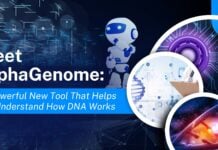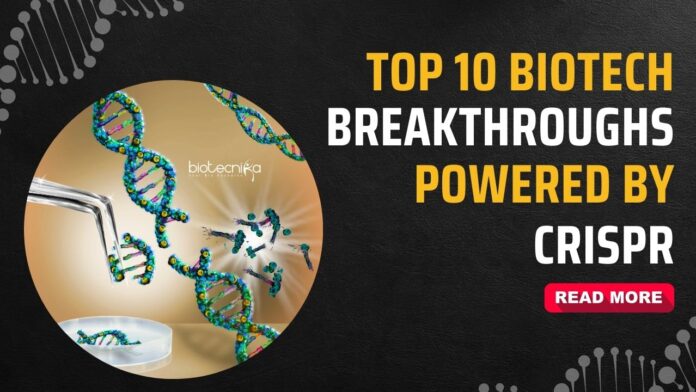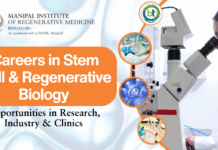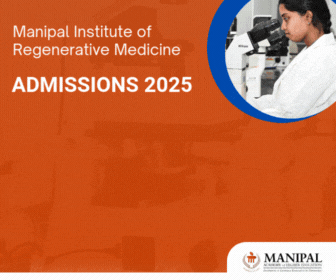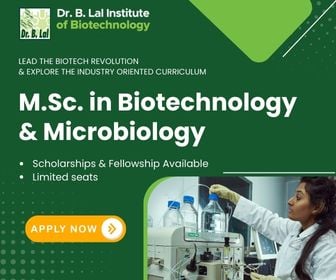Top Biotech Discoveries Using CRISPR
What if we can delete the gene responsible for the life sentence called genetic disorder? What if we can modify our immune cells to fight a battle against deadly cancer? Or what if we can engineer a crop that can grow in the harshest conditions, feeding millions of people?
Now imagine a tiny molecular scissor slicing through the threads of DNA, with its precise cuts stitching the new reality. This is not a sci-fi movie or a story but today’s reality. This molecular scissor, aka CRISPR Technology, has taken us from “what if” to “what’s next” in just a few years.
This technology not only asks questions but also provides solutions to them. In this journey of discoveries, let us look at how this tiny scissor is revolutionizing the scientific community and revealing a world beyond our imagination.
Table of Contents
Rewriting the DNA: Gene Therapy for Genetic Diseases
With the discovery of mutated DNA sequences being responsible for genetic diseases, researchers across the world were on a mission to rectify these faulty sequences. But how?
Well, that is when CRISPR emerged as a lifesaver, providing Gene Therapy as a solution. With the help of CRISPR Technology, researchers can rectify the mutated DNA by inserting or deleting the DNA sequence. These therapies will provide a long-term solution for the disorders. Both inherited genetic diseases (e.g., hemophilia and sickle cell disease) and acquired disorders (e.g., leukemia) can be treated with gene therapy. FDA-approved gene therapies for Spinal Muscular Atrophy (SMA), cerebral adrenoleukodystrophy, β-Thalassemia, hemophilia A/B, retinal dystrophy, and Duchenne Muscular Dystrophy have generated buzz around the ability to change the course of genetic syndromes.
Germline Editing & CRISPR Babies
Have you ever thought about how you will look with different eyes or hair color?
Your imaginary thought was turned into reality. In November 2018, He Jiankui, a Chinese scientist, claimed that he had created the world’s first genetically modified babies through germline editing. In this process, changes are made in the DNA of the embryo or reproductive cells, which can be passed on to the next generation. With the editing, the researcher can nullify the chances of passing on the genetic disorders.
While this process opens the doors to new opportunities, it comes with risks that can reshape mankind. With His work on CRISPR gene editing of twin babies, the scientific community has raised alarms over the lack of transparency and ethical responsibility. While some argue that germline editing can save millions of people, others raise their concerns about the misuse of technology. Some researchers are cautious that people will use his technology to attempt to acquire superior genes, creating inequality in mankind.
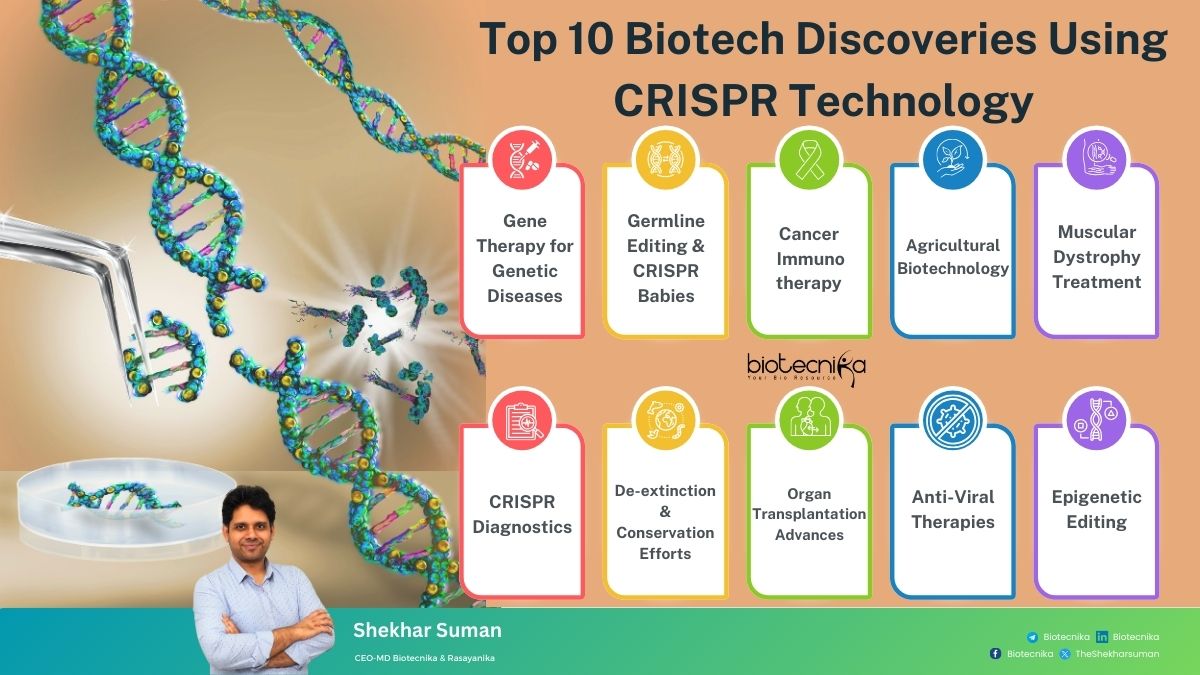
Cancer Immunotherapy
Cancer has always been a difficult enemy to deal with. Even with years of research, scientists are not able to find a reliable cure. That is when CRISPR has emerged as a promising tool to fight against the deadly cancer. With CRISPR, one can approach treatment in multiple ways, such as CAR-T Cell Therapy and Gene Editing. The T immune cells are taken from cancer patients and subjected to genetic engineering to produce surface-specific antigens called chimeric antigen receptors (CAR). After modifications, these cells can now tackle the cancer cells more effectively and can cure the disease. The CAR-T Cell Therapy is used against leukemia and lymphoma.
Agricultural Biotechnology – Top Biotech Discoveries Using CRISPR
One of the most significant applications of biotechnology in agriculture is with the help of gene editing CRISPR. This technology allows scientists to cut DNA and make modifications. These modifications will help the crop become more resistant to pests, environmental stresses, and diseases. Gene editing enhances productivity, quality, and sustainability. These modified crops decrease the need for chemical fertilizers and pesticides. With the help of CRISPR, new crops are developed, such as blight-resistant wheat and drought tolerate rice.
Muscular Dystrophy Treatment
Due to the mutation in the genes responsible for muscle structure and function, incurable muscular dystrophy has become a curse to the people severely affected by it. But not anymore. The gene editing technology has shown reliable results, making it an ideal solution for this genetic disorder.
In 2020, scientists were able to edit the dystrophin gene in mice successfully. The gene was responsible for muscle functions, and mutation of it would lead to Duchenne Muscular Dystrophy (DMD). This milestone has given scientists a new hope to cure Muscular Dystrophy. Based on this milestone, pre-clinical trials have been conducted to check the efficacy and safety of the patient treated with CRISPR.
CRISPR Diagnostics
CRISPR is not only a gene editing tool but also a disease diagnostic approach. SHERLOCK™ is a method for single molecule detection of nucleic acid targets. It works by programming special CRISPR-Cas enzymes to detect the presence of a specific nucleic acid sequence in a sample through ‘smart amplicon detection.’ When the sequence is detected, the CRISPR-Cas enzyme is activated to generate a robust signal. This signal can be adapted to work on a simple paper strip test, in laboratory equipment, or to provide an electrochemical readout that can be read with a mobile phone.
De-extinction & Conservation Efforts
With the advancement in technology, scientists can now bring back extinct species or revitalize endangered populations, controlling the damage caused by humans to the environment. CRISPR allows scientists to have control over the genetic material, making it possible to modify the genome in a way that brings back the extinct species. The process involves the extraction of the genome from the closely related species, editing it with the help of CRISPR, and cloning it back into the desired species. Currently, scientists are working on bringing back the Woodly Mammoth by editing the genome of Asian elephants, the closest living relative of the mammoth.
Organ Transplantation Advances – Top Biotech Discoveries Using CRISPR
Xenotransplantation, the process of transferring organs from animals to humans, is the reality of the medical world. However, this process is challenging because the human immune system rejects animal organs. Scientists are genetically modifying the genome of animal organs, particularly pigs, to make them compatible with the human system. With the help of CRISPR, scientists can edit the genes responsible for triggering the human immune system for the rejection of animal organs, making them less likely to be attracted.
Anti-Viral Therapies
Unlike the current treatments, which manage the signs and symptoms of the diseases, CRISPR offers a permanent solution by removing the viral genetic material from the host genome. Viruses like HIV and Herpes incorporate their genetic material into the host genome, causing a persistent infection. With CRISPR technology, researchers can target these genes and cut them from the host genome. The laboratory studies have shown remarkable results in using CRISPR for anti-viral therapies. If CRISPR-based therapies are successful, then a new revolution can be seen in the treatment of chronic infections.
Epigenetic Editing
CRISPR is not only about cutting and modifying the DNA. Its capability is far beyond. One of the fascinating applications of CRISPR is Epigenetic Editing, which involves the alternation of a gene without changing its actual sequence. This method has great significance in cancer research, gene therapy, and unlocking complex genetic material. This editing process allows scientists to modify epigenetic marks or chemical tags, which play an important role in gene regulation. The tags are responsible for determining the turning on or off of the genes. With CRISPR, scientists can effectively control the gene expression. Scientists can turn on genes that were affected by external factors. For example, if a gene responsible for suppressing the tumor is turned off, then the scientist can turn it on with the help of CRISPR.
The story of CRISPR has just begun. But what a start it was. From what if to what next, CRISPR has come a long way, bringing new hopes and opportunities. This tiny scissor is helping us to find the solutions for the complex genetic diseases to bring back extinct species. Present-day discoveries using CRISPR Technology have given us a glimpse into the future. The possibilities are endless, and with each discovery, we are one step closer to a world where no disease is incurable, no crop is fragile, and no scientific milestone is far.
Top Biotech Discoveries Using CRISPR, Top CRISPR Discoveries, Biotech CRISPR Discoveries

